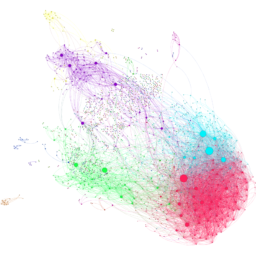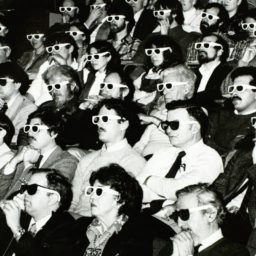Instead of being a responsible adult this weekend, I went out to catch Pokémon around my city on my skateboard. It’s a beautiful game. Here’s one of the places it took me to:

Unless you’ve been under a rock for the past 72 hours, you must have heard of Pokémon Go by now. You might already have seen players wandering around, looking for a particular Pokémon.
Nintendo’s new hit game seems to fulfil the dream millennials grew up with: to travel across the land, searching far and wide, and catch each Pokemon to understand the power that’s inside (♫). Within two days of its release on July 6, it already had more installs than Tinder, and matches Twitter in amount of daily active users (link).

Social media platforms are filled with amazing stories from good to bad, rich to simple.
Saw two people on bikes with their phones out who said they were riding around looking for Pokemon. #PokemonGO
— Chaslyn Drilling (@Chasburger1) July 8, 2016
- How local businesses are taking advantage of Pokémon Go
- “Last night was completely different and something that I honestly couldn’t believe happened.”
- Over 2,000 people meet up to play Pokémon Go in Sydney
- Armed robbers use Pokémon Go to find 9 victims
- Teen plays Pokémon Go outside, finds dead body
- “At one point someone yelled “THERE’S A RHYDON IN THE STREET!” and from my position I could see 50+ people all turn their cameras in the same direction to reveal the beast.”
- “Pokémon Go got me a date”
Layering different realities
The game makes you walk around ‘the real world’ and catch Pokémon. Everyone sees the same activity zones on their map. If there’s a rare Pokémon nearby and you’re in a densely populated area, chances are you’ll meet other players. Then there are Pokéstops, often linked to statues and monuments, which give you special items that help you catch more Pokémon.
Pokémon Go is the first big augmented reality (AR) success. With its filters, Snapchat has already shown that AR is ready to go mainstream for communication and entertainment purposes. Pokémon Go takes it a step further by taking the ‘information layer’ and mixing it with the offline layer. There is so much information available online about all the things we pass on our daily commutes. Now a video game shows how to layer this information onto the real world in order to create a new and engaging experience.
It makes sense. Video games have some of the most advanced interfaces. Products can sometimes get away with bad user experience (UX), but compensate with functionality. Video games are UX.
But I hear you thinking…
Cool story bro, but wtf does this have to do with the future of music?
Music is heavily impacted by changes in technology. When recording & pressing became cheap, a niche part of the music business suddenly became known as ‘the music industry’. Album artwork proliferated due to the arrival of cheap printing (H/T Roey Tsemah who mentioned this in our panel at Border Sessions). The mass spread of colour TVs added the music video to the essentials that need to be taken care of when releasing a single.
Now, we all have connected devices in our pockets that are more powerful than the computers on our desks a few years ago. So far, music as a format hasn’t changed much. But this type of change happens slowly, then suddenly. Music no longer has to be static by default, and it won’t be. It will be 3-dimensional, it will be interactive, it will be adaptive, it will be intelligent, it will be augmented.
Music has been augmenting reality for 35 years
Sitting on the metro with classical music augments your experience. So does biking through nature with punk rock. For many of you, or your parents, a Walkman was your first mobile device, not a phone. Some of us can’t even imagine going outside without our headphones. We need music to augment our daily activities.
One day there will be a major platform for adaptive music. In a way, it will be something like Pokémon Go. With challenges, unlockables, microtransactions and trading. A real economy where the money-rich, time-poor can benefit from the value created by the time-rich, money-poor.
It will have a global catalogue of songs, which are non-static. This means you can let them react to your environment or activities, but not necessarily. By leveling up, you can unlock new parts of the catalogue, new features, new filters. If you happen to have an amazing session with a non-static piece of music, you can save it, so you can hear it again or friends can listen to it. These types of activities help you level up and earn you virtual currency.
Clever entrepreneurs are working on these platforms right now. Some have been for years. There’s GEOBEAT, a recent Midem Labs finalist. There’sWeav, by one of the Google Maps creators. Whitestone, a platform for interactive audiovisual experiences. RjDj, by one of the Last.fm founders (RjDj is defunct, though recently released a new app ¯\_(ツ)_/¯ (??)).
Each of these have a different way of bringing about this future. It doesn’t even have to be about one platform — what I wrote is just a sketch.
What matters is this:
- Technology changes music itself
- Music has not yet responded (much) to the last 2 decades of development of mobile technology
- Music has always played a role in augmenting our reality
- Augmented reality is the base of the next generation of music and music business
And it’s not starting now. It has already started.
Written for my weekly newsletter MUSIC x TECH x FUTURE. If you enjoyed reading this, please consider sharing and subscribing.














